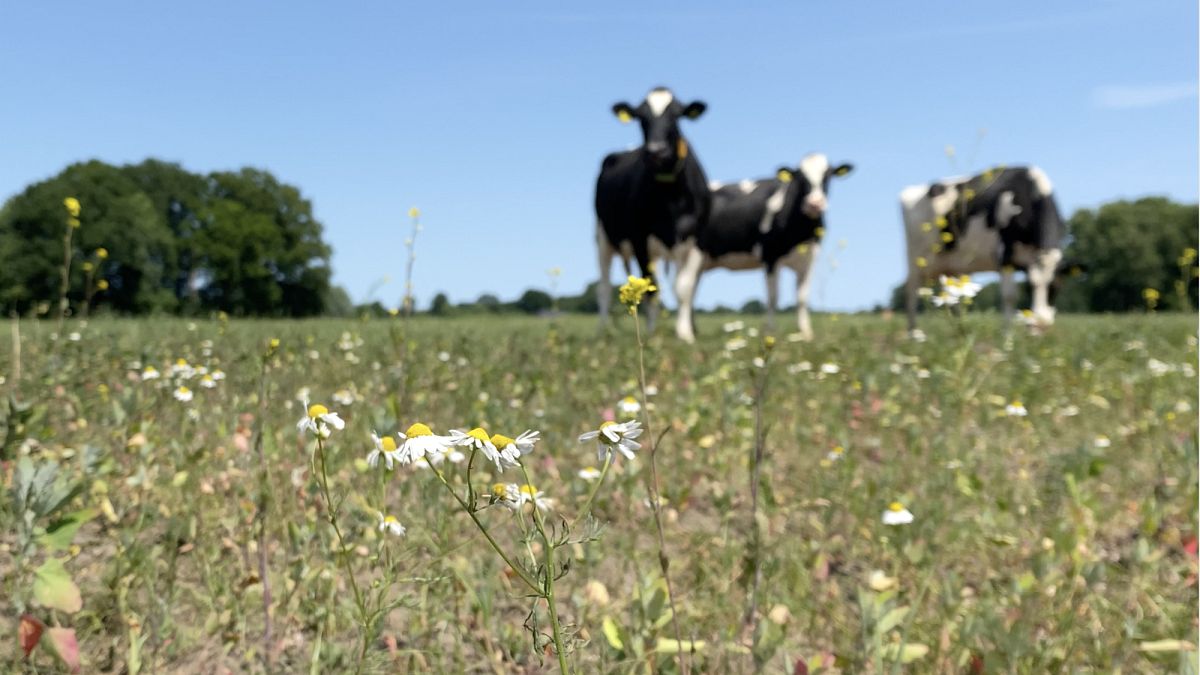Published on
The Netherlands is the second world exporter for agricultural products and ground zero for Europe’s nitrogen crisis. Here, nitrogen deposited onto every acre of farmed land remains three times the EU average. Still, the government has postponed halving nitrogen emissions by 5 years, to 2035. A decision that defies national and European laws which aim at near-zero nitrate pollution by 2050. Intensive farming is among the main causes.
In the Netherlands, there are 620 head of livestock for every 100 residents. All these animals, concentrated in a relatively small area, produce meat, cheese, milk, but also enormous quantities of a by-product that’s increasingly difficult to manage: manure.
Farmer Nanda van den Pol, explains the 90 cows of her family business produce 30 litres of milk each per day and three thousand cubic metres of manure per year. We found that is the equivalent of 40 medium-sized swimming pools full of slurry. How do they get rid of this?
“At the moment we can use 80% of this slurry in our fields and we have to get rid of the rest.” Nanda explains.
Her farm paid around 100 thousand euros to get rid of the exceeding slurry last year. She estimates that sum might rise to around 400 thousand in the next two years, as the waste poured in their fields will have to decrease.
“If it’s all going in the line that they are telling us now – Nada says – I don’t think we’ll have our family farm by 2030. Yeah. You want to be a part of the solution, but they make it impossible. It’s so difficult not to have any power in this.”
NGOs say the government’s decision to postpone nitrogen emission targets is hitting hard on ecosystems. I met a representative of the organisation Mobilisation for the Environment, known for taking the State and farmers to court in defense of the environment.
“You’re in my garden, but it borders the Natura 2000 area called the Kwade Hoek -says activist Max van der Sleen – From here, you basically can try to understand biodiversity loss. Some time ago there was a nice dune vegetation. But it has been completely covered by nettles and hop. That changes the ecosystems.”
In the Netherlands only 28% of Natura 2000 conservation areas are in good condition, he says. These sites were created to protect Europe’s most valuable and threatened species and habitats. Max explains the Dutch Government is simply not doing it.
“The government doesn’t really want to act so quickly, in five years’ time, and they have a good argument for it. They say that the social cost would be very high, but this is already known for 40 years. The regulation that they should act is already from 2019.”
Max says his NGO doesn’t want farms to stop, but to balance production and nature conservation.
“It is not the farmers who don’t want to do it. If you give them a chance to go into this direction of more sustainable farming, they will take it. But the government has to allow it.”
Why is it so difficult for the Netherlands, and other European countries, to reduce nitrogen pollution? Jan Willem Erisman, Professor of Environmental Sustainability at the Leiden Institute of Environmental Sciences explains it is often underestimated that agricultural change is a long-term change, while policy “needs solutions tomorrow”.
“There should be a long-term policy which gradually helps the farmers to switch to sustainable and supports them step by step. That’s not in place.” Professor Erisman explains.
As delays continue, in the Netherlands and in the rest of Europe the cost of inaction grows — for farmers, ecosystems, and for EU’s green agenda. The question now is whether meaningful change will come in time — and at what cost.
Read the full article here


